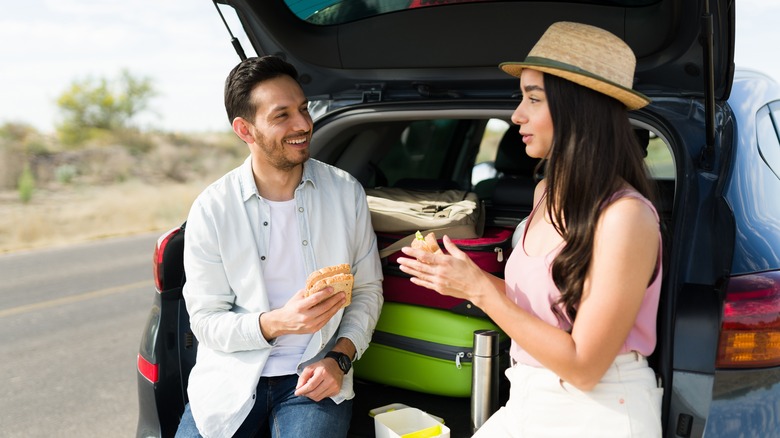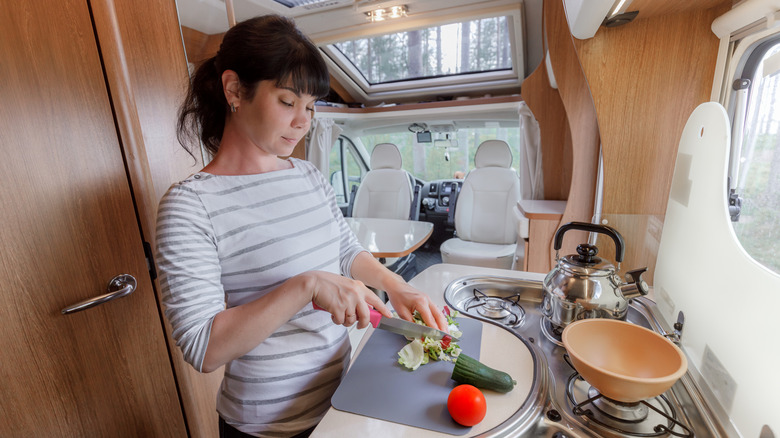The Fascinating Tip That Will Ramp Up Your Vacation Meal Plans
With the increased price of food both at restaurants and at grocery stores, every traveler wants to save some money, which can be done with some advance travel planning. Plus, as The New York Times points out, the anticipation is most of the fun when it comes to traveling.
According to Credit Donkey, a family of four should plan on spending an average of $132 per day on their meals (not including alcohol, snacks, and tips). With a variety of kinds of accommodations, each one will affect your food budget differently. Credit Donkey suggests picking a hotel with a full kitchen so you can buy groceries and fix your own meals or a hotel that offers breakfast. There's also the increasingly popular option of staying in a home rental or taking an RV across the country. Both of these options will allow you to prepare your own meals on-site or even to pack prepared meals before you hit the road.
Planning = saving money
When planning your food budget and what to eat on vacation, The New York Times recommends taking a few factors into consideration: Does anyone have food allergies? Do some people like to snack? Are certain people bigger eaters than others? Even talk to your fellow travelers about what they are most looking forward to eating or drinking while on vacation. From this, you can create meal planning goals. Sight Doing uses several criteria when setting food goals for a trip: Easy to make, adaptable recipes (if you can't find ingredients or equipment) that are not wasteful, semi-healthy, and one pot meals.
It's hard to know what a rental home's kitchen may contain, so McCormick recommends asking the site host in advance. If you find out it's a very minimal cooking space, some easy items to pack are a sheet pan, spatula, spoon, and a set of tongs. McCormick also recommended that you plan meals which include only a small amount of ingredients and that preferably cook in one pan. Before your next trip, the trick to eating inexpensively might simply be understanding how your travelers eat and what they like to eat.

